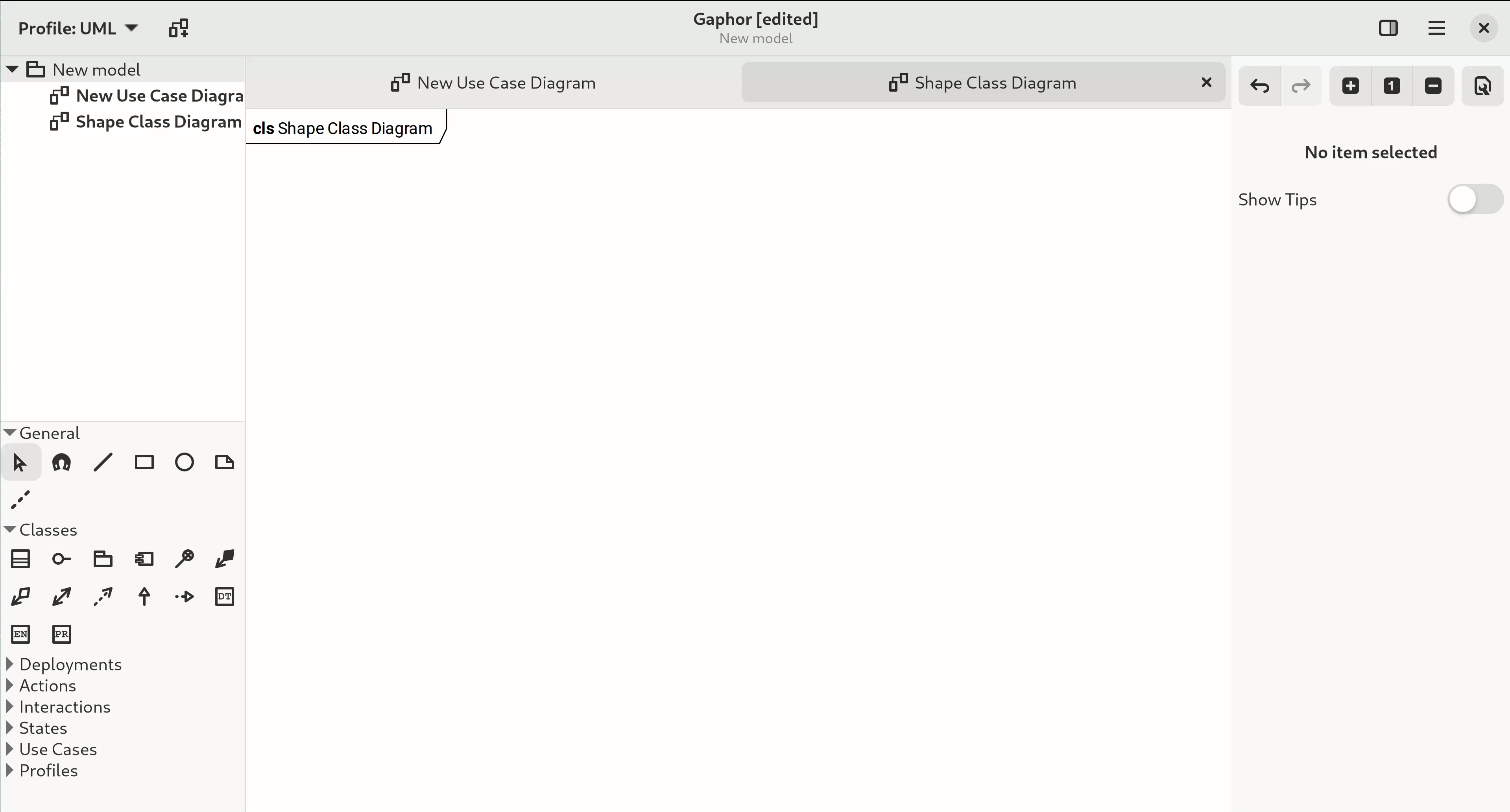Gaphor is a UML and SysML modeling application written in Python. It is designed to be easy to use, while still being powerful. Gaphor implements a fully-compliant UML 2 data model, so it is much more than a picture drawing tool. You can use Gaphor to quickly visualize different aspects of a system as well as create complete, highly complex models.
Gaphor is a UML and SysML modeling application written in Python. We designed it to be easy to use, while still being powerful. Gaphor implements a fully-compliant UML 2 data model, so it is much more than a picture drawing tool. You can use Gaphor to quickly visualize different aspects of a system as well as create complete, highly complex models.
Gaphor is designed around the following principles:
- Simplicity: The application should be easy to use. Only some basic knowledge of UML or SysML is required.
- Consistency: UML is a graphical modeling language, so all modeling is done in a diagram.
- Workability: The application should not bother the user every time they do something non-UML-ish.
Gaphor is a GUI application. It has a modern GTK-based interface and uses Cairo for consistent rendering.
Gaphor is a library. You can use it from scripts and Jupyter notebooks and interact with models programmatically.
Non-Goals:
- Generating UML diagrams from source code. pynsource or pyreverse might be what you are looking for.
- Generating source code from diagrams or creating other concrete executable artifacts including use of fUML or ALF.
Although it would be possible to incorporate these features, these aren't the goals of this project. However, if these are important capabilities for you, you may be able to extend Gaphor by creating a plugin.
You can find the latest version on the gaphor.org website. Gaphor ships installers for macOS and Windows. Those can be found there. The Python package is also available on PyPI.
All releases are available on GitHub.
If you want to start developing on Gaphor, have a look at the Installation section of our documentation.
If using Gaphor for the first time you will be presented with a greeter dialog at startup in which you can select one of 5 models available to you to work in:
- Generic: (or blank) template
- UML: Unified Modeling Language template
- SysML: Systems Modeling Language template
- RAAML: Risk Analysis and Assessment Modeling language template
- C4 Model: a lean graphical notation technique for modelling the architecture of software systems template
After you select a template, the main Gaphor window will load, and you will be ready to start modeling. Gaphor will automatically select the correct profile based on the template that you selected, but you can also select other modeling profiles if needed by clicking on the button next to the Profile dropdown menu at the top of your window.
To select an element you want to place, for example a Class, click on the icon in the Toolbox and then again on the diagram. This will place a new Class item on the diagram and add a new Class to the model (it shows up in the Model Browser).
Portions of the toolbox may also be collapsed depending on the type of diagram you are modeling with. You can expand the collapsed portions of the toolbox if needed.
If you want to know more, please read our documentation on https://docs.gaphor.org.
Over 150 people that helped out building Gaphor. Too many to show in this readme. You can find them in CONTRIBUTORS file.
Would you like to contribute to the development of Gaphor? There are many ways in which you can help out:
- Review and update documentation.
- Open discussions on a feature/bug/idea
- Fix an open issue
- Tell other people about Gaphor.
We appreciate contributions of any kind. This project follows the all-contributors specification. Contributions of any kind are welcome!
More info on how you can contribute can be found in the contributing guide!
Translation of Gaphor is mostly done using Weblate.
For the Linux Flatpak, the desktop entry comment string can be translated at our Flatpak repository.
Thank you so much for your effort in helping us keep it available in many languages!
We value your participation and want everyone to have an enjoyable and fulfilling experience. As a GNOME Circle project, all participants are expected to follow the GNOME Code of Conduct and to show respect, understanding, and consideration to one another. Thank you for helping make this a welcoming, friendly community for everyone.
Copyright © The Gaphor Development Team
Licensed under the Apache License v2.
Summary: You can do what you like with Gaphor, as long as you include the required notices. This permissive license contains a patent license from the contributors of the code.





